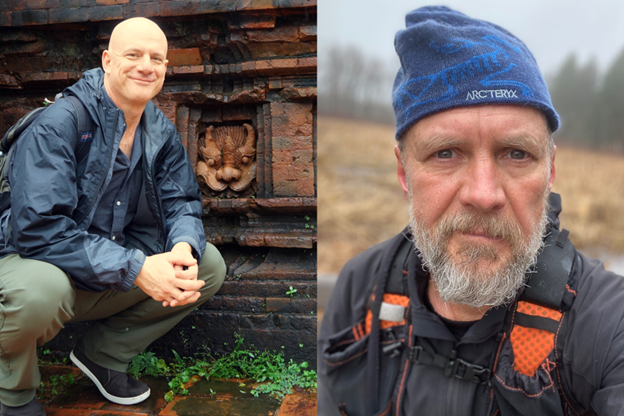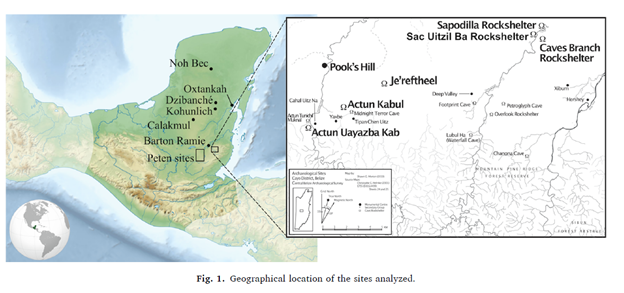MSU Anthropology faculty publish research on ancient populations from Central Belize
September 19, 2022 - Katie Nicpon

MSU Anthropology professors Gabe Wrobel, PhD, and Joe Hefner, PhD, recently published their collaborative research findings on ancient populations from Central Belize in the Journal of Archaeological Sciences: Reports. Their article, “Exploring Maya population history of Central Belize from Late Preclassic to Late/Terminal Classic,” focuses on an expansive moment in history that saw a rise in population and construction in this region of connected river valleys.

Illustration of Central Belize region of study. Photo credit: Drs. Gabe Wrobel and Joe Hefner.
“Like many areas of the Maya area at the beginning of the Late Classic period (~AD 500), Central Belize shows a dramatic population explosion and construction of large civic-ceremonial centers,” Dr. Wrobel said. He explained that these served administrative, economic, political, and ritual functions, and in Central Belize, were connected by a network of raised roads.
“Our study explores the nature of the sudden and dramatic rise of these centers by asking whether they were constructed by local groups who were living in the valley in small farming communities, or whether other groups moved into this area to expand their territory to include Central Belize.”
Dr. Wrobel explained that Central Belize is strategically located between several rival kingdoms. It also is at the confluence of several ecological zones with a wide diversity of natural resources.
“For Belizean archaeologists, this research presents new insights into sociopolitical organization at the height of the Classic Maya period,” he said.
Their research, which documents a large shift from a rural farming area to dense settlement surrounding city centers within a few decades, has interesting parallels to today.
“For instance, as Californians look for new homes in places that are less expensive and less crowded, we see rapid construction and nucleation in places like Idaho and Texas, where populations were previously small and dispersed,” Dr. Wrobel said. “With that comes new demands on infrastructure and tensions between the older population and the new arrivals.”
This article is another artifact from Dr. Wrobel’s research project that he’s been directing since 2005. Dr. Hefner enjoyed the opportunity to be a part of Dr. Wrobel’s project during this phase and to connect and work with their colleagues.
“I worked with Gabe on the analysis of these data and contextualizing our results for publication,” Dr. Hefner said. “This research was a great way to collaborate with Gabe and our colleagues in Mexico and Belize to explore the rise of these centers.”
To read their full report, visit https://doi.org/10.1016/j.jasrep.2022.103630.

